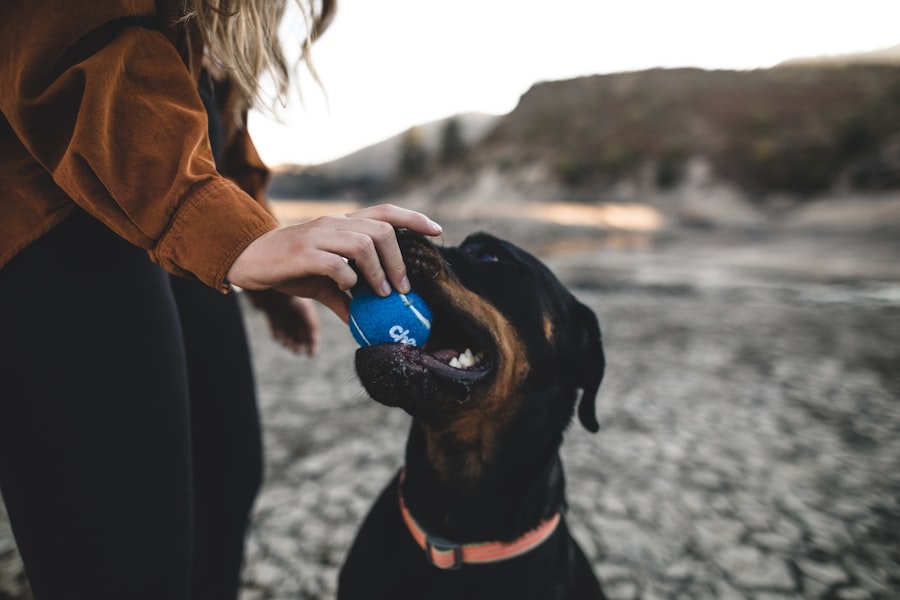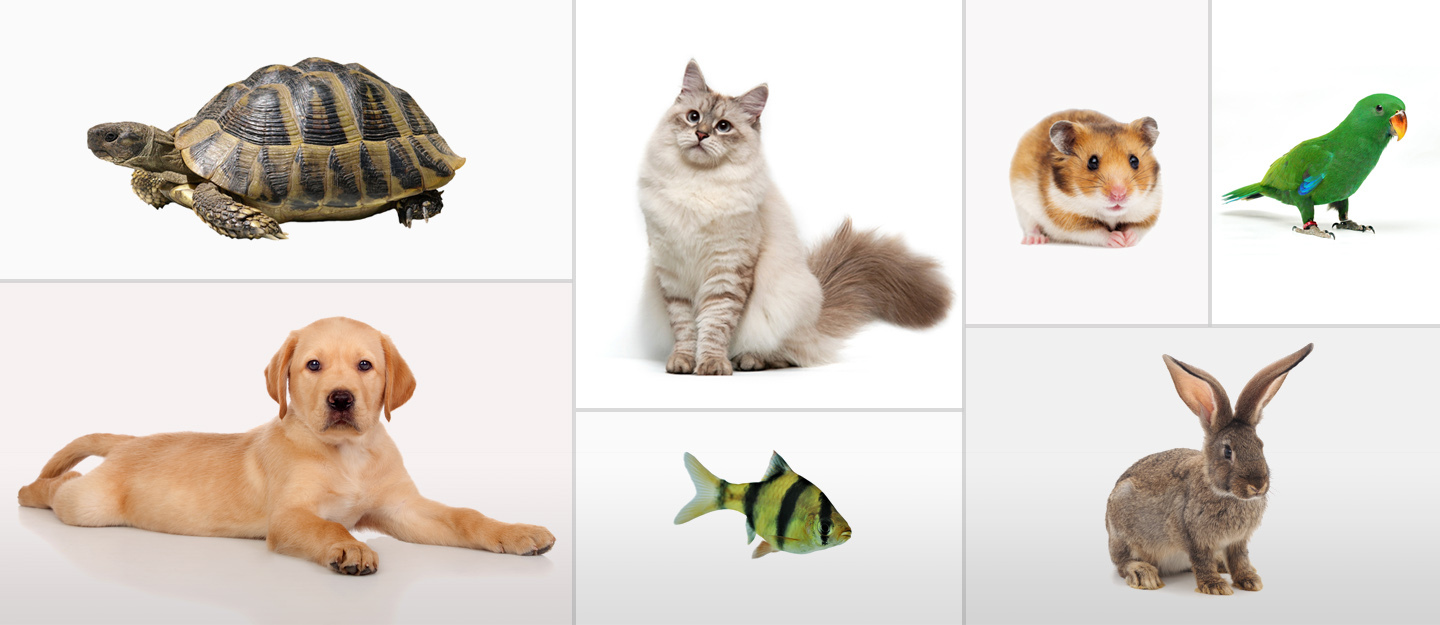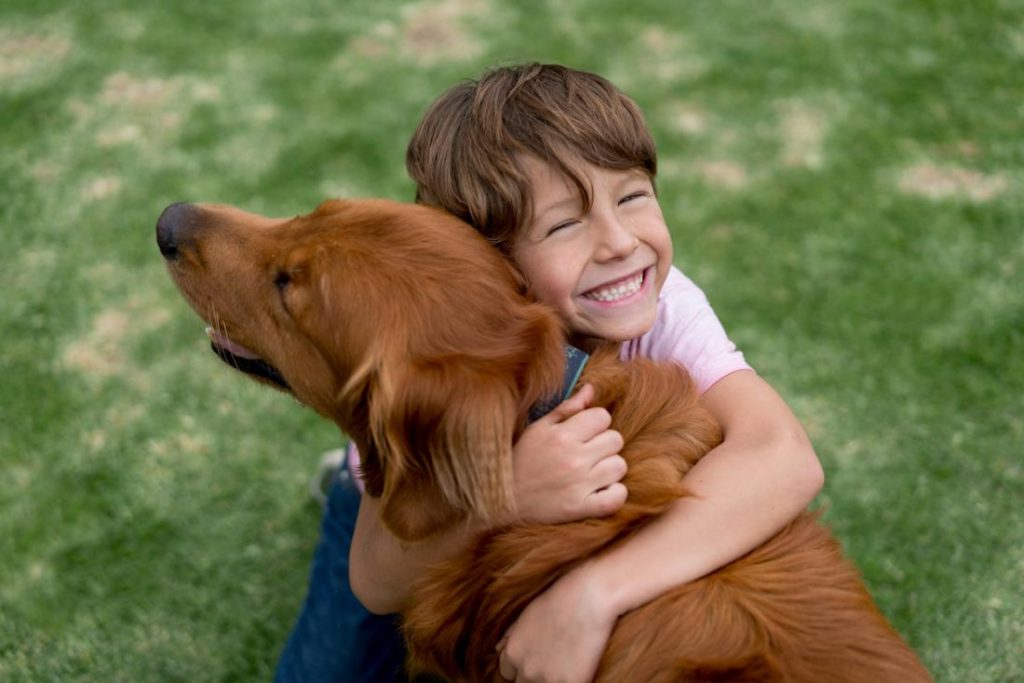How to Choose the Perfect Padded Dog Harness: A UK Buyer’s Guide
Selecting the right harness for your dog is essential for ensuring their comfort and safety during walks.
Padded dog harnesses provide numerous advantages, including enhanced support and reduced strain on your pet’s body.
This guide outlines the key factors to consider when choosing a padded harness, such as size, materials, and design options.
You will also discover various types of harnesses, tips for taking accurate measurements, trusted brands in the UK, and maintenance advice to keep your harness in optimal condition.
Understanding the Importance of a Padded Dog Harness
A padded dog harness is essential for enhancing your dog’s comfort and safety during walks and outdoor activities, ensuring they remain secure and well-protected.
Unlike traditional collars, padded harnesses distribute pressure evenly across your pet’s body, significantly reducing the risk of injury or discomfort. With adjustable straps and durable materials, these harnesses accommodate various breeds and sizes, making them a versatile choice for pet owners in the UK.
Additionally, many padded harnesses feature reflective elements that increase visibility during nighttime walks, ensuring safety for both you and your furry companion.
Recognizing the importance of a padded harness can transform your dog walking experience into a more enjoyable and secure venture.
Why a Padded Harness is Beneficial for Your Dog
Using a padded dog harness provides numerous benefits that enhance your dog’s comfort and safety during walks or outdoor activities. The soft padding ensures that pressure is evenly distributed across your pet’s body, which is particularly advantageous for breeds that are prone to neck injuries.
The no-choke design of these harnesses prevents strain on your dog’s throat, making them ideal for dogs that tend to pull during walks or are undergoing training. These features can lead to improved pet behavior and a more enjoyable experience for both you and your dog.
Plus preventing choking, the padded design reduces friction and irritation, allowing for longer walks without discomfort. This thoughtful construction encourages dogs to move more freely, which can help reduce anxiety and promote better behavior, as dogs typically respond positively to equipment that prioritizes their comfort.
A well-fitted padded harness also aids in managing bolting or enthusiastic pulling, giving you better control during outings.
Incorporating this type of harness not only safeguards your pet’s physical well-being but also fosters a more relaxed and harmonious walking experience, ultimately enhancing the bond between you and your furry companion.
Factors to Consider When Choosing a Padded Dog Harness
Choosing the right padded dog harness requires careful consideration of several factors that can significantly impact your pet’s comfort, safety, and overall experience.
First and foremost, you should assess your dog’s size and breed to ensure that the harness fits correctly and securely. It is advisable to look for harnesses with adjustable straps to accommodate various body shapes and sizes, in addition to selecting durable materials that can withstand daily use and wear.
Furthermore, consider the weight capacity and leash attachment features, which are crucial for your dog’s comfort and your ease of use while walking them.
Size and Fit
Ensuring the proper size and fit of a padded dog harness is crucial for your dog’s comfort and safety. A secure fit prevents the harness from slipping or causing discomfort, which is why it is essential to measure your dog’s girth and neck circumference before making a purchase. Many padded harnesses feature adjustable straps that allow you to customize the fit for various breeds, ensuring that both small and large dogs can enjoy a comfortable walking experience.
To begin, gather a flexible measuring tape and have some treats on hand to keep your dog calm during the process. Start by measuring the girth, which is the widest part of your dog’s chest, just behind the front legs. It is important to ensure the tape is snug but not too tight, as this can lead to inaccurate readings.
Next, measure around the neck at the base to determine the correct neck circumference. After obtaining these measurements, refer to the manufacturer’s size chart to find the most suitable size. Adjustable straps are particularly beneficial, as they accommodate any slight deviations from standard measurements, providing added security during walks and outdoor adventures.
Material and Durability
The material and durability of a padded dog harness are essential to its overall effectiveness and longevity. It is advisable to select harnesses made from high-quality, breathable fabrics that provide comfort while also withstanding daily wear and tear.
Consider features such as machine-washable materials for easy cleaning, ensuring that the harness remains fresh and hygienic for your pet’s ongoing use. A durable harness contributes to the overall quality and reliability that you, as a pet owner, seek.
When evaluating different materials such as nylon, polyester, or cotton, it is important to recognize how they can significantly influence your choice. Nylon harnesses are typically lightweight yet incredibly strong, making them suitable for active pets, while cotton options offer unmatched comfort for those with sensitive skin.
Choosing breathable fabrics will help ensure that your dog stays cool and dry during outdoor activities, preventing overheating. By prioritizing these factors, you can find a harness that not only meets your dog’s needs but also provides peace of mind through its well-crafted design and resilient materials.
Design and Style
The design and style of a padded dog harness play a crucial role in both functionality and aesthetics, making it an essential consideration for pet owners. You should look for an ergonomic design that aligns with your dog’s natural movement, ensuring comfort during outdoor adventures or daily walks.
Take note of the variety of color options and styles available in the market; these allow you to express your pet’s personality while also incorporating reflective features for enhanced safety during nighttime outings.
With an ergonomic harness, you can be confident that your furry friend will enjoy a snug fit while also having the freedom to move without restrictions. This thoughtful combination of form and function enhances engagement in a range of activities, from leisurely strolls to exciting hikes.
The extensive selection of colors, spanning from vibrant shades to classic neutrals, enables you to choose designs that reflect your dog’s character and your personal taste.
When reflective accents are thoughtfully integrated into these designs, they serve a dual purpose, making the harness both stylish and a practical choice for visibility in low-light conditions, ensuring your pet remains safe on every outing.
Types of Padded Dog Harnesses
When choosing a padded dog harness, it is important to understand the various types available to select the best fit for your dog’s specific needs and activities.
Several harness types exist, such as:
- Anti-pull harnesses, which are designed to discourage pulling during walks.
- Training harnesses that facilitate better control during obedience training.
Each type serves unique purposes, offering both comfort and functionality for outdoor activities or daily use. This ensures that you and your dog can enjoy a harmonious experience together.
Vest Harnesses
Vest harnesses are an excellent choice for pet owners due to their comfortable design and secure fit. These padded dog harnesses wrap around your dog’s torso, providing even weight distribution and maximizing comfort during walks and outdoor activities. Their design minimizes the risk of chafing and discomfort, making them suitable for both small and large dogs.
The adjustable straps allow for a customized fit, ensuring that the harness remains securely in place without restricting movement. This flexibility is particularly beneficial for active dogs that enjoy exploring, as it supports their adventurous spirit while prioritizing safety.
Many vest harnesses are available in various styles and colors, allowing you to select one that aligns with your aesthetic preferences. Additionally, the use of breathable materials enhances comfort, especially during warmer months, keeping pets cool and content.
Selecting a well-designed vest harness can significantly elevate the roaming experience for your furry companions.
Step-in Harnesses
Step-in harnesses offer a straightforward and effective solution for pet owners who prioritize ease of use without sacrificing comfort. Designed for quick and uncomplicated fitting, these padded harnesses allow your dog to simply step into them, making them ideal for those with busy lifestyles. The soft padding enhances comfort, ensuring that your dog feels secure while enjoying outdoor activities.
The convenience of putting on and taking off a step-in harness saves you time, turning walks into a more enjoyable experience. Many designs also include adjustable straps, allowing for a customized fit that accommodates different breeds and sizes, enhancing the overall experience for both you and your pet.
The sturdy yet lightweight materials used in step-in harnesses provide durability without adding unnecessary weight. This thoughtful design not only prioritizes your pet’s comfort but also gives you peace of mind, knowing that your furry companion is safe and snug during your adventures together.
Front-clip Harnesses
Front-clip harnesses are particularly advantageous for training and controlling dogs that tend to pull during walks. By attaching the leash to the front of the harness, these padded dog harnesses effectively redirect your dog’s movement, making them an excellent choice for training sessions. This anti-pull design not only enhances walking control but also promotes better behavior, ensuring a more enjoyable experience for both you and your dog.
This type of harness enables you to maintain better communication with your pet, which is essential for reinforcing positive behaviors. With the leash positioned at the front, any strong pulling or lunging can be promptly addressed, allowing for a calmer, more focused walk. Front-clip harnesses also prevent strain on the neck, thereby reducing the risk of injury and serving as a safer alternative for all dog breeds.
The ease of adjustment and comfort offered by these training harnesses further encourages consistency in training, helping you to cultivate a more disciplined and well-mannered companion.
How to Measure Your Dog for a Padded Harness
Measuring your dog accurately for a padded harness is a crucial step in ensuring a secure fit that promotes both comfort and safety.
Begin by using a soft measuring tape to measure around your dog’s chest, just behind the front legs, and take note of the girth measurement. Additionally, measure the circumference of your dog’s neck and consider their weight to determine the appropriate size from the available options.
By following a fitting guide, you can select a harness that sits comfortably without being too tight or too loose.
Step-by-Step Guide to Accurate Measurements
To achieve accurate measurements for your padded dog harness, follow this step-by-step guide to ensure a secure fit tailored to your dog’s dimensions.
Start by gathering a soft measuring tape and have your dog standing comfortably. Measure the girth around the widest part of their chest, followed by the neck circumference, as these metrics are essential for selecting the correct harness size. It’s important to consider the adjustable straps available in many harnesses, which can accommodate slight variations in size.
Taking precise measurements not only enhances your pet’s comfort but also plays a crucial role in their safety during walks. After measuring the girth and neck, be sure to write down these dimensions, as they will serve as a reference when choosing the appropriate harness size. Keep in mind the importance of fit; a poorly fitted harness can lead to discomfort or chafing.
Once you’ve selected a harness, the adjustable straps can help achieve the perfect solution, ensuring a snug fit without being overly tight. Testing the harness for adequate space between the straps and your dog’s body is essential to ensure a secure fit, providing both you and your furry companion with peace of mind.
Top Padded Dog Harness Brands in the UK
Exploring the leading padded dog harness brands available in the UK can assist you in making an informed choice for your furry companion. Established brands provide a range of options tailored to different sizes and breeds, ensuring both quality and customer satisfaction.
By reviewing customer feedback and ratings, you can gain valuable insights into the reliability and performance of various harnesses, enabling you to select a harness that meets your pet’s needs and fits seamlessly into your lifestyle.
Reviews and Recommendations
Customer reviews are essential in guiding pet owners toward the best padded dog harness options available in the market. Many brands receive accolades for their comfort, durability, and effective design, while others may face criticism regarding size or fitting issues.
By carefully evaluating both positive and negative reviews, you can make an informed decision and select a padded dog harness that caters to your dog’s unique needs.
For example, brands such as Ruffwear and Kurgo are often recognized for their superior quality and user-friendly designs. Pet owners frequently praise Ruffwear’s harnesses for their innovative features and adjustable straps, which ensure a snug fit that enhances security during outdoor adventures.
Conversely, Kurgo typically garners commendations for its reliability and ease of use, particularly its quick-release buckles that simplify the harnessing process.
By considering these insights from other dog owners, you can confidently choose a harness that not only meets your dog’s physical requirements but also fulfills functional demands for daily activities.
Tips for Proper Use and Maintenance of a Padded Dog Harness
Proper use and maintenance of a padded dog harness are essential for ensuring its longevity and effectiveness in providing comfort and safety for your dog.
Adhering to straightforward care instructions can significantly extend the life of the harness, enabling you to partake in many more outdoor activities with your pet.
Regular cleaning is crucial, particularly for harnesses that are exposed to various elements, and understanding the appropriate cleaning methods is key to preserving the durability of the materials used.
Proper Fitting and Adjustments
Ensuring that your padded dog harness fits properly and making the necessary adjustments are essential steps in maximizing its effectiveness and your dog’s comfort.
After selecting the correct size, adjust the straps to achieve a secure fit, allowing for two fingers to fit comfortably between the harness and your dog’s body. This approach ensures that the harness remains snug yet comfortable, facilitating ease of movement during walks and training sessions.
A well-fitted harness minimizes the risk of chafing and rubbing, which can lead to discomfort or injury over time. These adjustments are vital in preventing your dog from escaping the harness during outings, thereby enhancing safety for both your pet and those around you.
Regularly checking the fit and making minor adjustments can help accommodate changes in your dog’s weight or coat throughout the year. Ultimately, a properly adjusted harness not only enhances your pet’s mobility but also boosts their confidence, creating a more enjoyable experience for both you and your furry companion.
Cleaning and Care Instructions
Regular cleaning and care of your padded dog harness are essential for maintaining its quality and ensuring your dog’s comfort during use. Many harnesses are machine washable, which makes the cleaning process straightforward and efficient.
It is important to follow the manufacturer’s care instructions to prevent damage while ensuring that the harness remains fresh and free of debris that could irritate your pet’s skin.
To keep the harness in optimal condition, conducting routine checks for frayed edges, worn straps, or weakened buckles is crucial, as any of these issues can compromise safety. Depending on the materials used, spot cleaning with mild soap and water can effectively remove dirt and stains, while allowing the harness to air dry helps preserve its shape.
Regularly inspect for any accumulated odors, which can be addressed with a gentle fabric refresher, ensuring that a clean environment is maintained for your furry friend. Consistent care not only prolongs the life of the harness but also enhances the overall experience during those important walks.
Frequently Asked Questions
What are the benefits of using a padded dog harness?
A padded dog harness provides additional comfort and support for your dog, distributing pressure evenly across their body. This can be especially beneficial for dogs with respiratory issues or those who tend to pull on their leash.
How do I choose the right size for my dog?
It is important to measure your dog’s chest and neck before purchasing a padded harness. Consult the manufacturer’s size guide to ensure a proper fit. Avoid choosing a size based on your dog’s weight, as this can vary greatly between breeds.
What materials should I look for in a padded dog harness?
Look for a padded harness made from durable, high-quality materials such as nylon or neoprene. Additionally, check for adjustable straps and sturdy hardware to ensure a secure and comfortable fit for your dog.
Are there any specific features to consider for UK buyers?
For UK buyers, it is important to consider the weather conditions and climate. Look for a padded harness with breathable fabric and weather-resistant materials to ensure your dog’s comfort and safety in varying conditions.
What are some important safety considerations when choosing a padded dog harness?
When choosing a padded dog harness, it is important to ensure that it is secure and properly fitted to prevent your dog from escaping. It is also crucial to regularly check and adjust the harness as your dog grows or if any weight fluctuations occur.
Can I use a padded harness for all types of dogs?
Padded harnesses are suitable for most dogs, but it is important to consider your dog’s breed, size, and specific needs. For example, smaller or brachycephalic (short-nosed) breeds may benefit from a lightweight, padded harness, while larger or more active dogs may require a sturdier option. Consult with a veterinarian for any specific concerns or recommendations.
How to Choose the Perfect Padded Dog Harness: A UK Buyer’s Guide Finding the right harness for your dog can be challenging, but investing in a quality padded dog harness UK ensures both comfort and safety during your daily walks. This comprehensive guide will help you navigate the options available and choose the perfect fit for your four-legged friend.













































































































